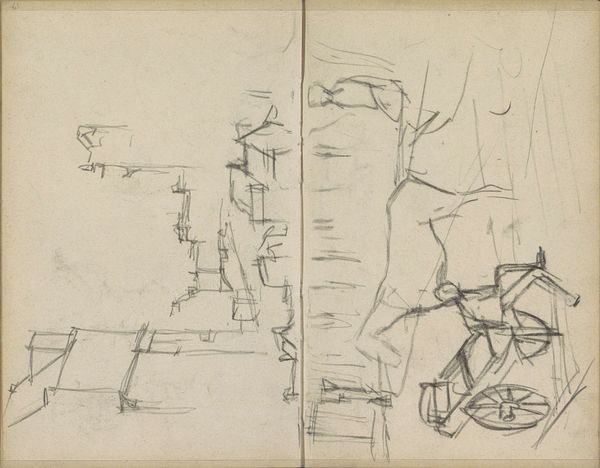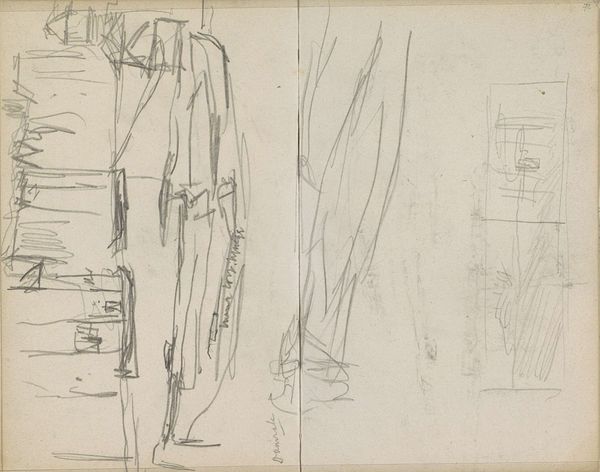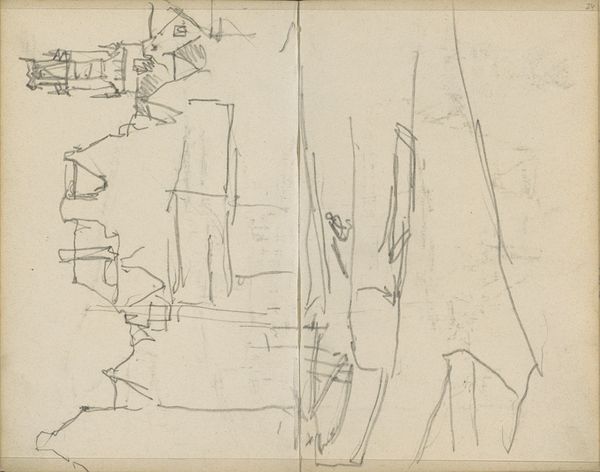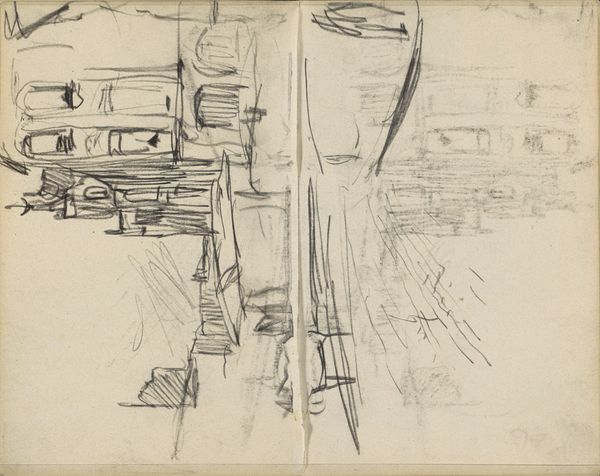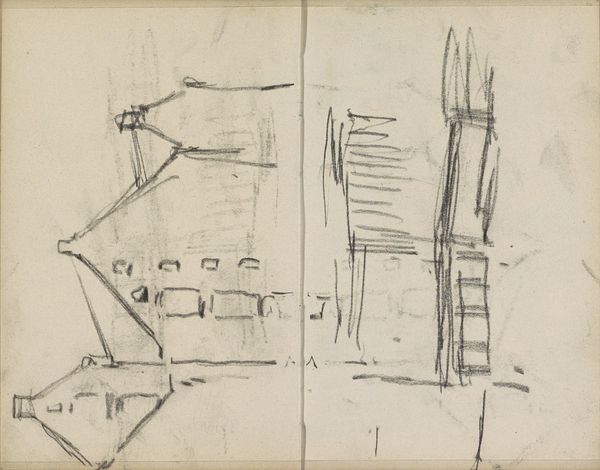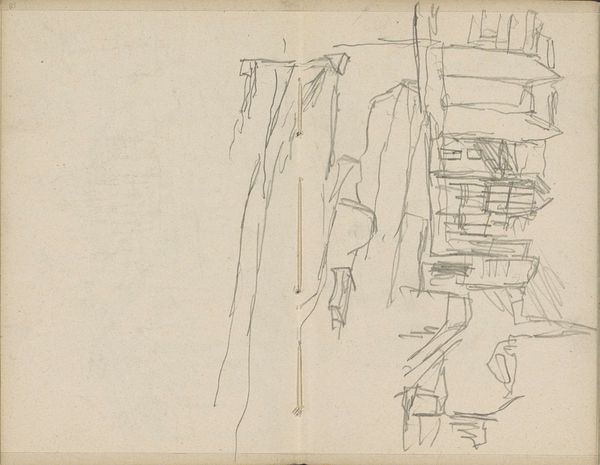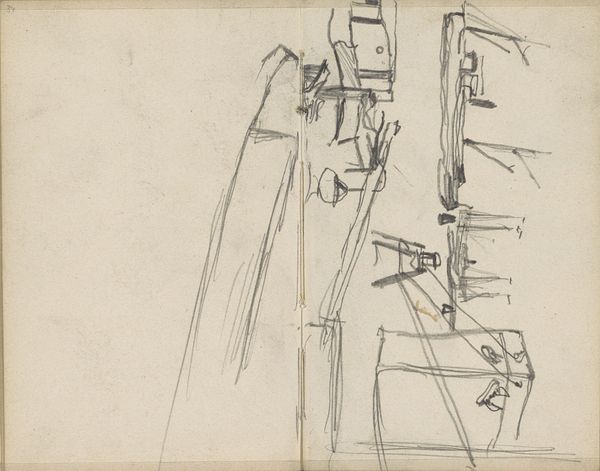
Copyright: Rijks Museum: Open Domain
Curator: Let's take a look at "Gezicht op boten aan het Damrak te Amsterdam," a pencil drawing by George Hendrik Breitner, dating from around 1903 and now residing here at the Rijksmuseum. Editor: It's striking how raw it feels, almost like a snapshot of a thought rather than a finished piece. The composition is dominated by strong verticals and diagonals, but with these hesitant pencil lines, and overall subdued impression. Curator: Breitner was a key figure in Dutch Impressionism. What I find fascinating is how his work reflects the rapid industrialization and urbanization happening in Amsterdam at the time. You know, the art world really was in conversation with this transformation. Editor: Absolutely, you can see the skeletal remains of boat building etched into the page here. The pencil sketch form implies a need to catch this quick impression of these boatyards, emphasizing labor's central, gritty materiality. There’s almost an immediacy there, that would contrast the laborious processes of working with, say, steel. Curator: Indeed, Breitner was nicknamed "the painter of Amsterdam life," because, for all the seeming abstraction, his street scenes brought the changing urban environment directly into art exhibitions and collections, capturing daily scenes. His vision aligned closely with Émile Zola’s call for naturalistic rendering in literature and painting. Editor: There is also a striking sense of place without much specific detail; you can see that Breitner only selected some very suggestive and economical construction points, so the material processes going on there appear like phantom impressions and ephemeral encounters, rather than as things fixed in stone. Curator: Right. And, consider where this image was made public, the public art world still needed to grapple with photography's effect on representing cityscapes; so this drawing perhaps helped that visual transition and experimentation. Editor: Precisely! This drawing embodies how quickly cities developed at this time, with sketches appearing to offer almost instantaneous renderings. It makes me think of labor and the social costs of all these swift and sweeping alterations. Curator: For me, Breitner's sketch provides a potent look at Amsterdam at the beginning of the 20th century, and its transition. Editor: I'm left thinking about the laborers' lived experience, but also the materiality itself. It seems like, even now, there are ways the built world seems not quite “built.”
Comments
No comments
Be the first to comment and join the conversation on the ultimate creative platform.
